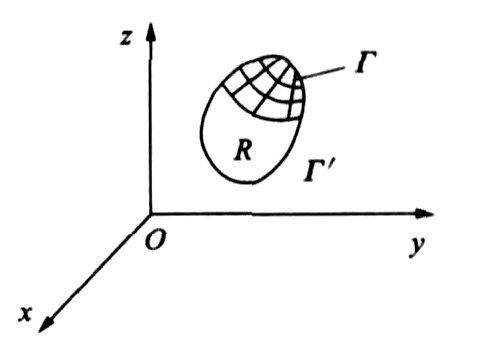Updating coupling method of hydration heat temperature damage for concrete box girder
-
摘要: 为了防止混凝土箱梁墩顶块在施工过程中出现早期开裂与温冲现象, 研究了混凝土水化热温度损伤模型, 综合考虑混凝土弹性模量与边界条件的时变效应, 采用线性迭代方法, 建立了混凝土箱梁墩顶块水化热温度损伤修正耦合方法, 计算了水化热温度损伤场随时间变化的过程, 得到了水化热温度损伤时程关系曲线, 分析了温度损伤时变效应规律。计算结果与实测结果对比表明: 混凝土箱梁水化热温度偏差小于10%, 水化热温差峰值比水化热温度峰值滞后约32h, 等效应变峰值与温差峰值发生时间相同, 水化热温度损伤度与等效应变成正比, 时变效应规律一致, 因此, 此方法可行。Abstract: In order to prevent the earlier crack and temperature dash phenomenon of pier-on mass for concrete box girder during construction, hydration heat temperature damage model for concrete was studied, the time-dependent effect for modulus of elasticity and boundary conditions were comprehensively considered, an updating coupling method of hydration heat temperature damage for the girder was put forward by using linear iteration method, the whole damage field with the variation procedure of temperature load was computed, and the damage laws were analyzed based on the time-dependent relation curves of the field. Comparison between calculated result and measurement result shows that the deviation of the hydration heat temperatures is less than 10%, the appearing time of the difference peak value for the hydration heat temperature delays about 32 h compared with the temperature peak value, the peak values of the equivalent strain for the girder and the temperature difference appear synchronously, the hydration heat temperature damage degree is linear to the equivalent strain, their time-dependent effect laws are similar, so the model is feasible.
-
Key words:
- bridge engineering /
- concrete box girder /
- damage updating /
- coupling method /
- time-dependent effect
-
表 1 理论温度与实测温度比较
Table 1. Comparison of theory and actual temperatures
测点 累计时间/h 24 48 72 96 120 144 168 192 A1 实测温度/℃ 56.7 65.3 62.4 55.7 53.1 47.5 42.7 38.5 理论温度/℃ 56.4 66.6 63.4 57.4 51.1 45.2 40.3 36.9 偏差/% 0.4 -2.0 -1.6 -3.1 3.8 4.8 5.6 4.2 A2 实测温度/℃ 58.3 61.6 57.2 54.5 54.5 44.9 38.1 35.7 理论温度/℃ 56.3 66.8 63.6 57.6 51.3 45.4 40.5 37.1 偏差/% 3.4 -8.4 -9.4 -5.7 5.9 -1.1 -6.2 -3.9 A3 实测温度/℃ 54.3 69.0 69.9 66.7 57.0 49.6 44.9 37.8 理论温度/℃ 56.2 67.4 65.7 60.6 54.5 48.2 42.8 39.1 偏差/% -3.4 2.3 6.0 9.1 4.4 2.8 4.7 -3.4 A4 实测温度/℃ 52.8 65.4 66.9 62.3 50.7 50.3 44.9 37.6 理论温度/℃ 55.8 65.9 63.9 58.8 52.9 46.7 41.5 38.0 偏差/% -5.7 -0.8 4.5 6.0 -4.3 7.2 7.6 -1.1 A5 实测温度/℃ 56.6 61.0 61.3 59.5 57.4 44.6 39.1 37.0 理论温度/℃ 55.2 64.3 63.2 58.9 53.2 47.1 41.6 38.1 偏差/% -2.5 -5.4 -1.4 1.2 7.3 -5.6 -6.3 -2.9 D1 实测温度/℃ 52.6 53.2 53.4 44.0 42.3 35.6 30.1 28.3 理论温度/℃ 56.3 57.0 52.0 46.9 41.9 36.9 32.8 30.8 偏差/% -7.0 -7.1 2.6 -6.6 0.9 -3.6 -8.9 -8.8 D2 实测温度/℃ 51.6 69.7 70.4 61.8 58.2 55.1 44.7 36.2 理论温度/℃ 55.8 65.8 63.9 58.9 53.0 46.9 41.6 38.1 偏差/% -8.1 5.6 9.2 4.6 8.9 8.2 6.9 -5.2 D3 实测温度/℃ 58.0 58.6 58.9 58.3 57.0 49.4 44.5 40.1 理论温度/℃ 55.0 63.2 61.3 56.9 51.4 45.6 40.4 37.1 偏差/% 5.2 -7.4 -4.0 2.4 9.8 7.7 8.9 7.4 表 2 修正弹性模量
Table 2. Modified modulus of elasticity
GPa 时间点/h 24 48 72 96 120 144 168 192 原始弹性模量 7.80 12.00 14.63 16.42 17.73 18.72 19.50 20.13 测点 A1 7.49 11.23 13.60 15.31 16.60 17.58 18.37 19.03 A2 7.49 10.99 13.27 14.99 16.34 17.36 18.18 18.88 A3 7.45 11.29 13.76 15.52 16.81 17.78 18.54 19.17 A4 7.43 11.24 13.69 15.44 16.73 17.71 18.47 19.11 A5 7.44 11.26 13.71 15.44 16.72 17.69 18.45 19.09 D1 7.49 11.29 13.69 15.40 16.69 17.68 18.46 19.11 D2 7.47 1.42 13.88 15.57 16.82 17.77 18.54 19.16 D3 7.43 11.16 13.50 15.18 16.45 17.44 18.23 18.91 -
[1] 徐道远, 王向东, 朱为玄, 等. 混凝土坝的损伤及损伤仿真计算[J]. 河海大学学报: 自然科学版, 2002, 30(4): 14-17. https://www.cnki.com.cn/Article/CJFDTOTAL-HHDX200204003.htmXu Dao-yuan, Wang Xiang-dong, Zhu Wei-xuan, et al. Damage to concrete dams and its simulation calculation[J]. Journal of Hohai University: Natural Sciences, 2002, 30(4): 14-17. (in Chinese) https://www.cnki.com.cn/Article/CJFDTOTAL-HHDX200204003.htm [2] 王振波, 王向东, 徐道远. 混凝土结构温度应力仿真分析[J]. 南京工业大学学报, 2002, 24(5): 20-24. https://www.cnki.com.cn/Article/CJFDTOTAL-NHXB200205007.htmWang Zhen-bo, Wang Xiang-dong, Xu Dao-yuan. Imitated analysis of thermal stresses in concrete structure[J]. Journal of Nanjing University of Technology, 2002, 24(5): 20-24. (in Chinese) https://www.cnki.com.cn/Article/CJFDTOTAL-NHXB200205007.htm [3] 宋玉普, 冀晓东. 混凝土冻融损伤可靠度分析及剩余寿命预测[J]. 水利学报, 2006, 37(3): 92-96. https://www.cnki.com.cn/Article/CJFDTOTAL-SLXB200603001.htmSong Yu-pu, Ji Xiao-dong. Analysis on reliability of concrete under freezing-thawing action and evaluation of residual life[J]. Journal of Hydraulic Engineering, 2006, 37(3): 92-96. (in Chinese) https://www.cnki.com.cn/Article/CJFDTOTAL-SLXB200603001.htm [4] 张岗, 贺拴海, 宋一凡. 混凝土箱梁水化热温度损伤安全评价模型研究[J]. 安全与环境学报, 2007, 7(4): 143-147. https://www.cnki.com.cn/Article/CJFDTOTAL-AQHJ200704038.htmZhang Gang, He Shuan-hai, Song Yi-fan. Safety mode for evaluation hydration heat temperature damage on concrete box bridge[J]. Journal of Safety and Environment, 2007, 7(4): 143-147. (in Chinese) https://www.cnki.com.cn/Article/CJFDTOTAL-AQHJ200704038.htm [5] 劳宇. 混凝土水化热温度损伤研究[D]. 南京: 河海大学, 2006. [6] 王振波, 徐道远, 王向东, 等. 混凝土热损伤试验研究[J]. 河海大学学报: 自然科学版, 2001, 29(6): 94-98. https://www.cnki.com.cn/Article/CJFDTOTAL-HHDX200106021.htmWang Zhen-bo, Xu Dao-yuan, Wang Xiang-dong, et al. Experimental study on concrete thermal damage[J]. Journal of Hohai University: Natural Sciences, 2001, 29(6): 94-98. (in Chinese) https://www.cnki.com.cn/Article/CJFDTOTAL-HHDX200106021.htm [7] 王铁梦. 工程结构裂缝控制[M]. 北京: 中国建筑工业出版社, 1997. [8] 杨秋玲, 马可栓. 大体积混凝土水化热温度场三维有限元分析[J]. 哈尔滨工业大学学报, 2004, 36(2): 61-63. https://www.cnki.com.cn/Article/CJFDTOTAL-HEBX200402036.htmYang Qiu-ling, Ma Ke-shuan. Analysis of massive concrete 3-dimensional finite element hydrated heat temperature field[J]. Journal of Harbin Institute of Technology, 2004, 36(2): 61-63. (in Chinese) https://www.cnki.com.cn/Article/CJFDTOTAL-HEBX200402036.htm [9] 阮静, 叶见曙, 谢发祥, 等. 高强度混凝土水化热的研究[J]. 东南大学学报: 自然科学版, 2001, 31(3): 53-56. https://www.cnki.com.cn/Article/CJFDTOTAL-DNDX200103012.htmRuan Jing, Ye Jian-shu, Xie Fa-xiang, et al. Study on heat of hydration on high strength concrete[J]. Journal of Southeast University: Natural Science Edition, 2001, 31(3): 53-56. (in Chinese) https://www.cnki.com.cn/Article/CJFDTOTAL-DNDX200103012.htm [10] 朱伯芳. 考虑温度影响的混凝土绝热温升表达式[J]. 水利发电学报, 2003, 22(2): 69-73. https://www.cnki.com.cn/Article/CJFDTOTAL-SFXB200302009.htmZhu Bo-fang. A method for computing the adiabatic temperature rise of concrete considering the effect of the temperature of concrete[J]. Journal of Hydroelectric Engineering, 2003, 22(2): 69-73. (in Chinese) https://www.cnki.com.cn/Article/CJFDTOTAL-SFXB200302009.htm [11] 朱伯芳. 水工混凝土结构的温度应力与温度控制[M]. 北京: 水利水电出版社, 1999. [12] 张湧, 刘斌, 贺拴海, 等. 桥梁大体积混凝土温度控制与防裂[J]. 长安大学学报: 自然科学版, 2006, 26(3): 43-46. https://www.cnki.com.cn/Article/CJFDTOTAL-XAGL200603010.htmZhang Yong, Liu Bin, He Shuan-hai, et al. Temperaure control and anti-crack of massive concrete in large bridges[J]. Journal of Chang'an University: Natural Science Edition, 2006, 26(3): 43-46. (in Chinese) https://www.cnki.com.cn/Article/CJFDTOTAL-XAGL200603010.htm [13] 刘来君, 贺拴海, 宋一凡. 大跨径桥梁施工控制温度应力分析[J]. 中国公路学报, 2004, 17(1): 53-56. https://www.cnki.com.cn/Article/CJFDTOTAL-ZGGL200401012.htmLiu Lai-jun, He Shuan-hai, Song Yi-fan. Analysis of temperature stress in control of long-span bridge construction[J]. China Journal of Highway and Transport, 2004, 17(1): 53-56. (in Chinese) https://www.cnki.com.cn/Article/CJFDTOTAL-ZGGL200401012.htm [14] 彭友松, 强士中. 公路混凝土箱梁三维温度应力计算方法[J]. 交通运输工程学报, 2007, 7(1): 63-67. http://transport.chd.edu.cn/article/id/200701014Peng You-song, Qiang Shi-zhong. 3-D thermal stress computation method of highway concrete box-girder[J]. Journal of Traffic and Transportation Engineering, 2007, 7(1): 63-67. (in Chinese) http://transport.chd.edu.cn/article/id/200701014 [15] 徐世烺, 张秀芳. 混凝土结构裂缝扩展全过程的新GR阻力曲线断裂判据[J]. 土木工程学报, 2006, 39(10): 19-28. https://www.cnki.com.cn/Article/CJFDTOTAL-TMGC200610003.htmXu Shi-liang, Zhang Xiu-fang. The new GR crack extension resistance as a fracture criterion for complete crack propagationin concrete structures[J]. China Civil Engineering Journal, 2006, 39(10): 19-28. (in Chinese) https://www.cnki.com.cn/Article/CJFDTOTAL-TMGC200610003.htm -





 下载:
下载:












